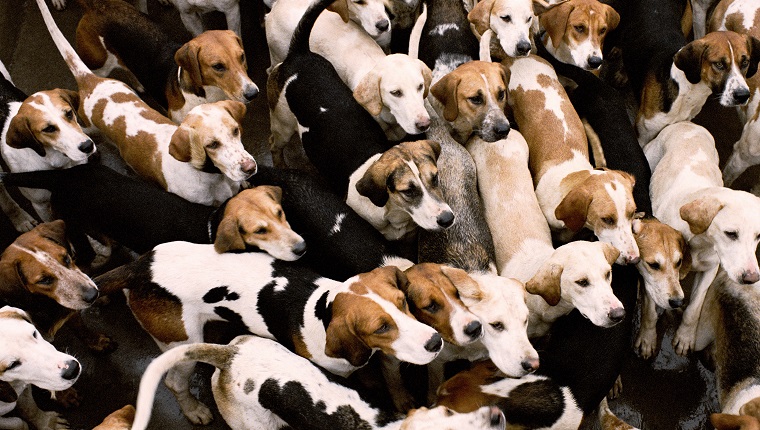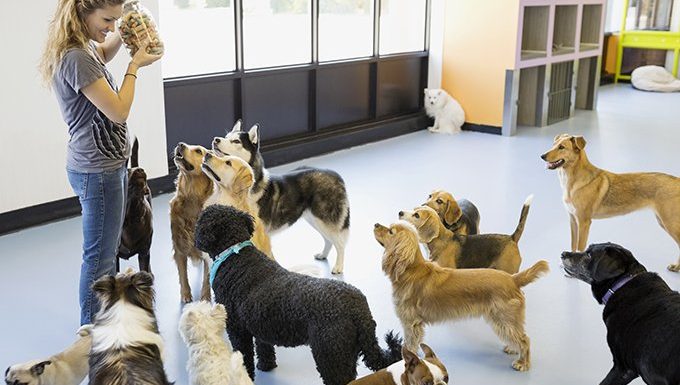
Some dog parents are completely content with one pup. Other dog lovers can’t imagine their lives without their little pack of pooches, whether that be two or five dogs. For many of us, having a large pet family can be tough, but we still have the mental and financial stability to care for each of our pets.
Then there are dog lovers who go from “loving their tiny pack” to hoarder status. Animal hoarding is not only dangerous to the animals in the hoarding situation, but also to the hoarder, themselves.
Here’s what you should know about animal hoarding and what to do if you see the signs of an animal hoarder.
What Is An Animal Hoarder?
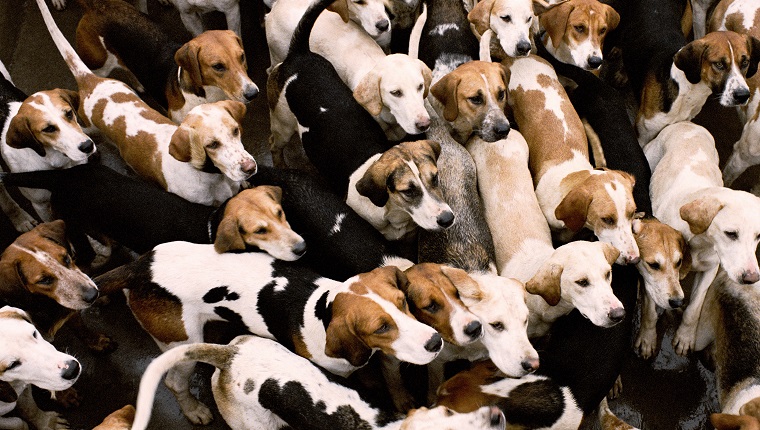
The term “animal hoarding” doesn’t simply refer to an individual who possesses more than the typical number of companion animals. Someone can have five dogs and still not be considered a hoarder.
Having a significant amount of dogs turns into hoarding when the collecting of dogs becomes compulsive and endangers the animals.
Hoarders do not have the resources or capabilities to care for all of the animals in their homes, may not even know how many animals are in their homes, and will be in denial of their inability to take care of all of the animals in their possession.
So how does one become an animal hoarder? After all, most people who become dog hoarders are often animal advocates; they wouldn’t knowingly do anything to harm their pets or any other animals.
Early research suggests that animal hoarding can be a variant of obsessive-compulsive disorder. On paper, that seems to make sense; animal hoarders compulsively adopt and “rescue” animals to bring into their homes.
Newer research, however, suggests that animal hoarding isn’t that black and white. Studies show that animal hoarding can stem from a variety of factors, such as attachment disorders and delusional thinking.
For example, if a person was unable to bond with peers in school, they may have anxieties around human socialization. Dogs or other animals may be comfortable companions to someone with social anxiety or severe depression.
Hoarders Believe They’re Helping Animals
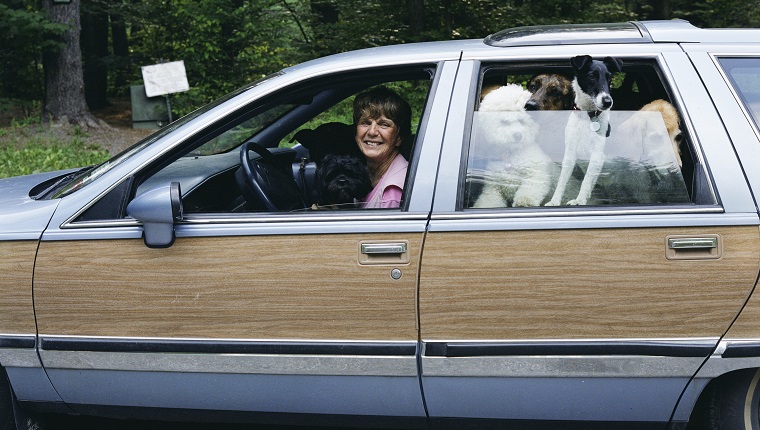
Some dog hoarders consider themselves “rescuers” and will grab dogs off of the street and bring them into their homes. They will often not check for microchips or search for the dogs’ rightful families. These types of hoarders believe that if someone was irresponsible enough to lose the dog, they shouldn’t get them back.
To this type of hoarder, they truly are helping this dog, even if they’re bringing them into a home environment that’s overcrowded and toxic in reality.
Animal hoarders will often do one small thing — such as clean out a tiny corner of a room for a new resident — and feel like that validates their ability to care for far too many animals.
These tiny efforts do not change the fact that the room that reeks of feces, feeble puppies are lying under the bed for days, or that dogs are fighting because they’re crammed into such tight living spaces.
What Are The Signs Of Animal Hoarding?
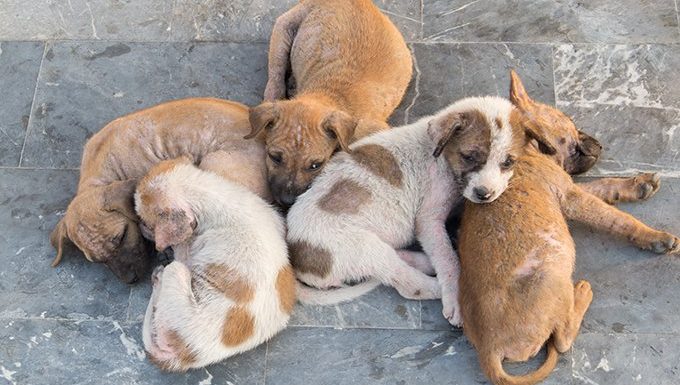
Dog and animal hoarding is not specific to any gender, age, or ethnicity. There are no clear cut reasons as to why people sink into this unhealthy coping mechanism.
Fortunately, there are signs to look out for when it comes to potential animal hoarders. Here’s what to look for if you suspect someone you know is hoarding any type of animal:
- The individual cannot tell you exactly how many dogs or animals they have in their home.
- The individual’s home is in disarray — dirty windows, furniture that’s broken and completely chewed through, extreme clutter, and general destruction.
- Animal feces and vomit covers the floors of the individual’s home.
- The individual insists that each of their animals is healthy, despite physical evidence that they are not.
- Dogs in a hoarder’s home are often ill, emaciated due to lack of food, and most likely are covered in fleas, ticks, and possibly mange or other parasites. Dogs could also be pregnant due to lack of spaying and neutering.
- The individual tends to keep to themselves and has isolated from you and other family and friends.
- The individual gets very defensive if anyone asks them about the health of their animals.
If you’ve seen many of these signs, it may be time to intervene for the sake of both your friend and the animals they’re hoarding. It’s vital to remember that even though you can clearly see that these animals and your friend are suffering, your friend cannot.
Animal hoarding isn’t officially a mental illness, but there are components of certain mental illnesses that can play a heavy role in it.
What Can You Do About An Animal Hoarder?
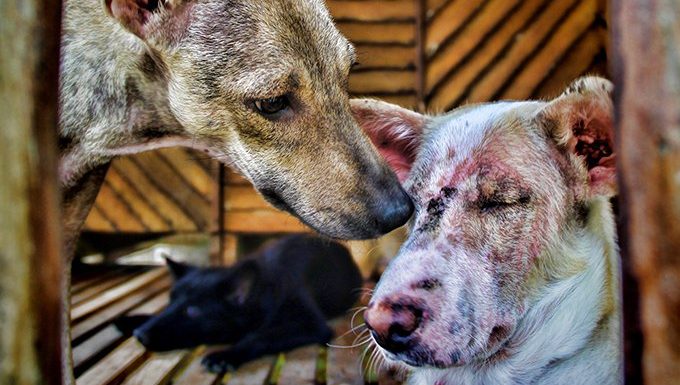
Again, your friend genuinely believes that they can care for all of these dogs, so trying to “give it to them straight” and wring them out for animal abuse will only make them lash out and isolate you further. This doesn’t help your friend or the dogs.
Even if the living conditions of the dog hoarder’s house are disgusting and clearly unhealthy, start with a non-accusatory dialogue. If your friend is hoarding animals, chances are they’re in remarkable emotional pain and do not have healthy coping mechanisms to work through it.
Empathy, patience, and understanding are necessities with the topic of your hoarder friend’s animals. Reiterate how much you care about this friend and that you know that they have nothing but love for all of their animals. Offer to help find professional help and homes for the animals if the hoarder seems receptive.
If your dog hoarder friend gets defensive and isolates themselves, it’s time to do the difficult but right thing. Call animal control or a trusted rescue to help medically treat and re-home the dogs.
Even after this, it’s important to reach out again to your hoarding friend. Letting your friend know you’re there for them shows that they can receive emotional support outside of caring for an unmanageable amount of pets and will help prevent the cycle from simply happening again.
Do you have any experience with a dog hoarder? What steps did you take to ensure the health of the animals in the hoarding situation? Let us know about your experience in the comments below.
